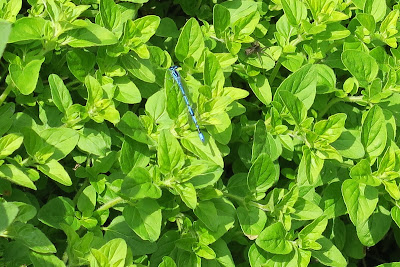 |
| Large Red Damselfly Click to enlarge. Photo. John Elliott | | | |
Damselflies are emerging from my small garden pond in larger numbers than usual this year, the warmer winter may have helped. To tell the difference between the
Large Red Damselfly and the slightly smaller
Small Red Damselfly you have to look at the legs, in the
Large they are black and in the
Small they are redish/yellowish.
 |
| Azure Damselfly. Click ot enlarge. Photo. John Elliott | | | | |
|
|
|
|
|
|
|
|
 |
| Azure Damselflies Ovipositing.. click to enlarge. Photo. John Elliott |
|
|
|
|
|
|
|
|
|
|
|
|
Six pairs of damselflies egg laying in a very small area of the pond. The upright bright blue ones are the males, which in this species stay guarding the female from other males and possible predators such as fish, and the females are the greenish, doubled up ones








